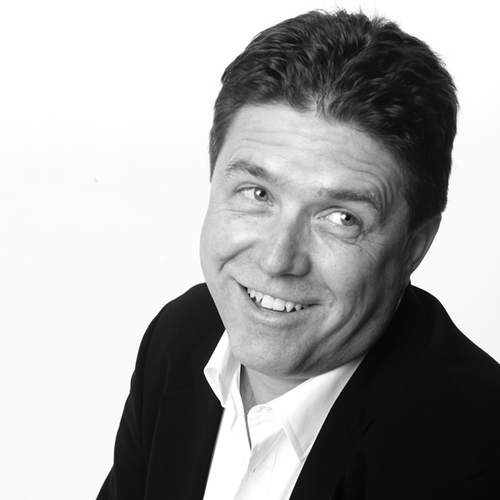
The Road to TEDx
“Until one is committed, there is hesitancy, the chance to draw back, always ineffectiveness.”
H.W. Murray
The role of startup CEO is challenging both personally and professionally. The variety and depth of problems you work on are incredible. Not only do you get to collaborate with amazingly talented and motivated people, but together you end up creating a business out of thin air. If you are lucky, it may even become one that changes the world in a big way. This is deeply satisfying. But the icing on the cake is that, along the way, there are many opportunities for personal growth. This last bit happened to me over the last year.
In the late summer of 2018 Mira, our CMO, and I, were talking about ways to grow industry awareness of FundRazr and differentiate ourselves in our crowded and noisy market. We knew we had a unique approach to solving nonprofit donor acquisition and retention problems and had customers who loved our long-term solution. But it was proving hard to convince professional fundraisers to accept changing trends in philanthropy. Mira felt that we needed to be bold and talk more about our crowdfunding innovations and industry leadership. I agreed but was worried that we didn’t have a way to get our message distributed. And, I was feeling a bit insecure. Was what I wanted to say important enough to justify the effort???
One of my favourite quotes is from W.H. Murray of the Scottish Himalayan Expedition. In it, he quotes Johann Wolfgang von Goethe.
“Until one is committed, there is hesitancy, the chance to draw back, always ineffectiveness. Concerning all acts of initiative (and creation), there is one elementary truth, the ignorance of which kills countless ideas and splendid plans: that the moment one definitely commits oneself, then Providence moves, too. All sorts of things occur to help one that would otherwise never have occurred.
A whole stream of events issues from the decision, raising in one’s favour all manner of unforeseen incidents and meetings and material assistance which no man could have dreamt would have come his way.
I have learned a deep respect for one of Goethe’s couplets:
“Whatever you think you can do or believe you can do, begin it. Boldness has genius, power and magic in it.”
To me, this isn’t just a bunch of nice words. I’ve experienced this effect so many times that even my internal skeptic knows to just shut up and get on with it when the quote comes to mind.
So, I said, “OK, let’s do it.”
The Universe is listening
It took less than a week for the first opportunity to present itself.
I received a phone call out of the blue from Zarrah, then an acquaintance but now a friend at the University of Northern British Columbia in Prince George. She asked, “Would you be interested in doing a TEDx talk about something around the future of philanthropy?”
I’ve always admired people who gave TED talks and secretly aspired to be one of them, but I had NO IDEA of what I would actually say in a talk of my own. And, while I am very comfortable talking in front of people and on camera (even live on the National news!), the idea of the TED talk format scared the crap out of me.
Don’t get me wrong. I love being on stage; positive attention from a crowd really fills me up. If I’m on a panel or, better yet, doing a talk on a subject I’m even modestly expert in, I feel pretty confident and enjoy the experience. Bigger stages tend to inspire more creativity. When I’m free to “roam” around my topic, my creativity kicks in, my personality shows up and everything works out much better. Some of my best talks and insights into our work and industry have come to mind while on stage.
But!
If I need to deliver some very specific talking points with carefully chosen words presented in specific order, I tend to stumble. The idea of memorizing and delivering an 18-minute monologue with minimal support from slides seemed like my own Everest.
So, in the spirit of the quote, I said, “For sure, let’s do it”.
I took some time to think about the topic but only came up with some lukewarm ideas. We got on a call and brainstormed to try to come up with a better Big Idea (the tagline of TED is Ideas worth sharing) that was also something juicy (because I’d hate to be boring).
We know from our field work that donating to a cause is more of a commercial transaction than most people want to believe. Instead of getting a product in return for your cash, you get an experience and that experience generates a bunch of feelings. Our hypothesis was that some ideas around improving the commercialization of the donation experience might fit the bill. After a few stabs at a title for the talk that none of us really liked, out popped a good one:
Feelings For Sale: Philanthropy Reimagined.
It was a bit edgy and actually annoyed a few people when they first heard it. We were on to something! I started to write the speech.
And then… about a week later… Zarrah called to let me know that their TEDx conference had to be postponed. The hope was that it would be rescheduled for Fall 2019.
Get committed and Providence moves
I believe it’s helpful to assume that everything happens for a reason. It may not be “the truth” but doing this keeps your mind open so that, if something better comes along, you’ll recognize the opportunity.
I was disappointed but completely understood. And, a tiny bit relieved. The memorize the monologue thing had been weighing on my mind.
And yet.
One of the funny things I’ve experienced is that, once you get behind the Commitment thing, Providence does move – sometimes despite feelings of wanting to slow it down. It only took nine days for the next “stream of events” to start. And the level of assistance was amazing.
Nicole Sawyer, a media executive whom I’d never met, called to invite me to join a panel at their Future of Crowdfunding conference at Bloomberg HQ in New York. The event would be livestreamed on their media channels and their terminals in Europe and the US.
“Would I be available to come?”
Now THIS was right up my alley and fit perfectly with our plan. “Hell, yeah!”
I was honoured to be asked. It was exactly the kind of credibility-building event we needed. It would be recorded so would be something we could refer to for years to come. And, it would give me a chance to practice my delivery of some specific talking points in a “battlefield environment” i.e. live in front of an audience and on camera. I could work on getting better control of my creativity and deliver more predictable and better-quality results.
The secret to success is preparation. That is easy to say but sometimes hard to do in the fast-paced world of startups. Nevertheless, Mira and I worked on a set of points we wanted to try to get out during the panel discussion and planned our approach to the moderator’s questions to help us keep it insightful and relevant.
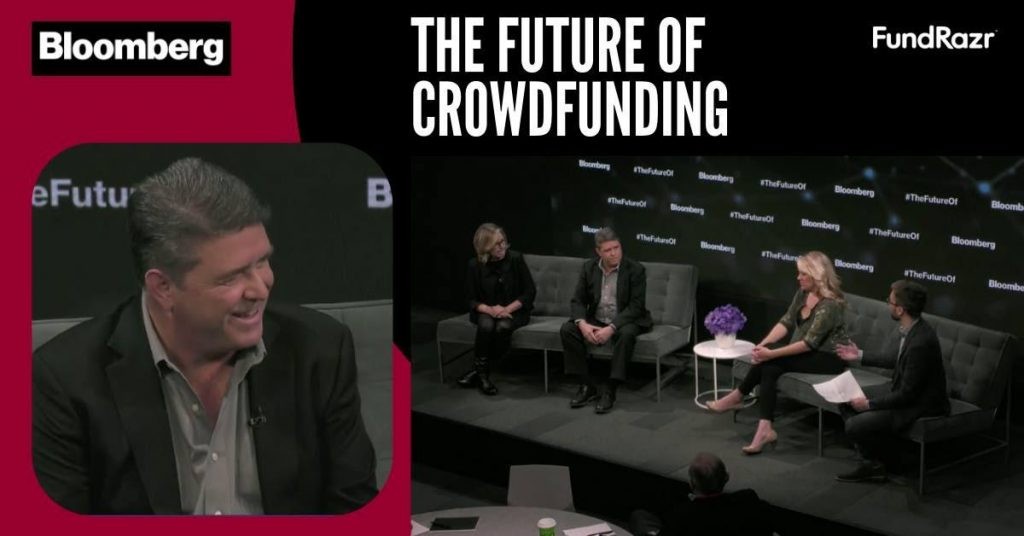
The Bloomberg studio was fantastic. The lighting and stage setups were very friendly to the speakers – you could SEE the audience! There were literally “right there” – just a few metres away.
I had a BLAST. And the very positive reaction we received to the panel encouraged me that what we had to say was important and worth sharing. Some of my friends rolled their eyes when they read that last line. There is a theme here – wait for it…
Less is more
Fast forward to April. The TEDx UNBC committee emailed to say that they were “go” for an event at the end of September and would I be available to participate? My heart jumped … and then sank.
I’d just booked tickets for my first “real” family vacation in the 10 years of running FundRazr and I’d be away touring Italy. I was reluctant to change it – especially with non-refundable tickets. They said, “Hold on – don’t give up! We’ll get back to you”. And the dates of the conference miraculously shifted to early October.
Game on!
Work on the talk began in earnest. While we’d put a pause on it last year, it was never far from my mind. In some ways, this was more of a curse than a blessing. Over the year, I’d talked with many people about the core idea, listened to their feedback, adjusted the message and tried again. As a result, my head was FULL of dozens of approaches to the material. The challenge became distilling the mass of ideas into one coherent framework.
I’d set the vision with the TEDx UNBC folks and my FundRazr team that we would honor the opportunity we’d been given and put in the work to make this a world-class talk. It sounded like a good approach, but I frankly had NO IDEA of how much work that would require.
If you watch a TED talk, it looks like the speakers are effortlessly stringing powerful words together, wandering comfortably around a stage, punctuating their words with appropriate gestures and all the while enjoying great rapport with the audience. It sometimes seems like they are just supremely talented individuals who can “pop off” a great speech at a moment’s notice.
What I’ve learned from doing the work on my talk is just how much time ACTUALLY goes into the preparation of the script behind these talks. In chats with other TED & TEDx speakers I quickly learned that this surprise at the effort required was an almost universal experience.
At the beginning, it felt like a few days of working hard on the content would produce the results I was hoping for. After many hours of trying to capture my thoughts in words, I made my first attempt at reading what I’d written out loud – just to get a “feel” for it.
Surprise!
TEDx talks are limited to a maximum of 18 minutes. I’d only written about what I’d estimated would be 2/3 of my content and the run through came in at 25 minutes! Not good.
What transpired
the next few months was a massive effort to distill the core idea and the surrounding words down to fit into the 18-minute window. Over that period, I added new content, tried new approaches to some of the supporting topics, cut content out, reworded, reordered, rephrased and reduced the idea count.
I discovered a few interesting things in this process. One was that I realized that I didn’t have a clear idea of what I wanted to happen because of the talk. After a few challenging discussions with advisors where they probed for what I REALLY (i.e. secretly) wanted to happen, it became clear that I wanted to change consumer/donor expectations of charity and force charities to adapt to that change sooner than later. For their own good, IMHO.
In talking this issue through with Deb and Zarrah from TEDx team, I mentioned that a good metaphor for what I wanted people to experience was the idea of making a crowdfunding campaign an entertaining, episodic story – kind of like a TV series. They jumped on it. And our new title became:
Philanthropy as Entertainment: Binge Watching for Good
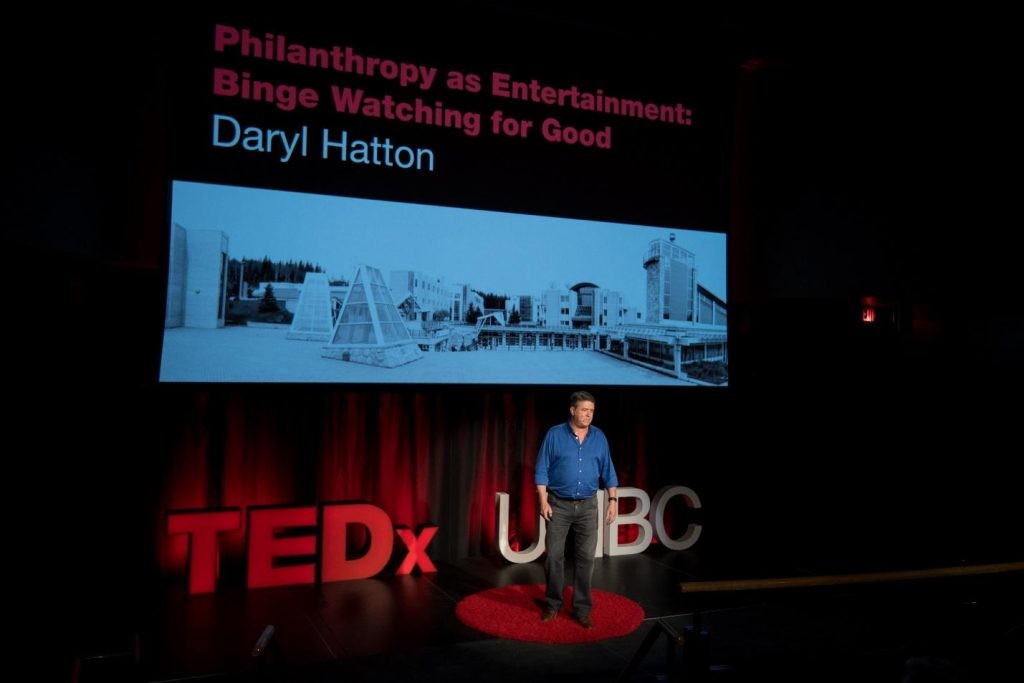
Crazy Canadian talking to himself over cappuccino
My team frequently talks about our desire to inspire change in our industry by inventing innovative solutions to big problems and delivering world class technology to make it happen. So, when we do our most important work, I sometimes challenge us: “Is this world class”?
As I said, my goal was to make the TEDx talk world-class. In an uncomfortable turn of events, that desire ran head-first into my dream of relaxing and enjoying my vacation without thinking about work…

I planned to memorize the entire speech before I left on vacation, but startup life conspired against me and I found myself on a plane to Rome feeling woefully unprepared to deliver the talk. Fortunately, the rhythm of our vacation gave me time almost every day to practice out loud. I read each section of the speech and then delivered it out loud with my eyes closed. I expect many Italians think the Canadian who talks to himself over his morning cappuccino was crazy but, no matter, my confidence in the speech was growing.
T minus one
I’m an experienced business traveler having flown the equivalent of roughly four round trips to the moon (well over a million miles). I was an expert at dealing with jetlag and still being “on my game”. However, when I did most of that travel, I was substantially younger. And apparently, it is a skill set that requires practice. The bulk of that travel was a decade ago.
Sadly, I’ve apparently lost my edge…
We flew back from Rome. I re-packed my suitcase and left the next morning to fly to Prince George for the dress rehearsal. The dress rehearsal practice speeches were done in the same order as the final presentations. I was scheduled to speak last – the organizers hoped I’d wrap the day with a strong performance. But, as a result, my practice time was very late at night – almost 9:00 PM. And my internal clock was running on Italian vacation time – i.e. 6:00 AM after traveling almost halfway around the world. Yuck. Needless to say, my practice run was not optimal. Fortunately, I learned a huge lesson…
I’d been practicing my speech in segments; each segment a distinct concept. I had transition language between each one. But – I rarely ran the whole thing through all at once. It was embarrassing to be talking to myself in the Italian coffee shops, so I kept the duration of each soliloquy to the minimum.
In my dress rehearsal, with my brain and body drained from travel (I even tripped coming onto stage), I hit one of the transition points between segments and completely blanked on what to say next. I rarely, OK never, have complete silence in my head. It is usually a cacophony up there with ideas jostling for position and attention. And here I was, standing on a stage, lights in my face, the conference organizers watching intently and… the sound of crickets echoing in my ears. Hello? Anyone? Anybody out there? Nothing. I have never experienced a void as black as that. Chilling.
An idea emerged. Note to self: practice the WHOLE DAMN THING through next time.
Fortunately, I just waited it out and the next idea in sequence finally woke from its nap and honored me with its presence. But it scared me. And set me up to hair-trigger implode.
Game Day
I went to bed that night highly motivated to do multiple run-throughs of the ENTIRE speech in the morning. I did. It worked. No surprise, eh? I came to the theatre ready to rock the stage, have some fun with the audience and enjoy myself.
But, that little hair trigger from the day before was lurking in my psyche.
I climbed up to the stage (careful not to trip this time!), took a breath, steadied myself, and started. Everything was going great for the first two minutes. And then…
I looked at the slide on my “confidence monitor”. And the slide coming up. And it didn’t seem right. The animated transition between the slides wasn’t working right. Or, at least, it didn’t seem to be working right. I was confused. And spent a little bit of time trying to figure it out before giving up and deciding to plow on.
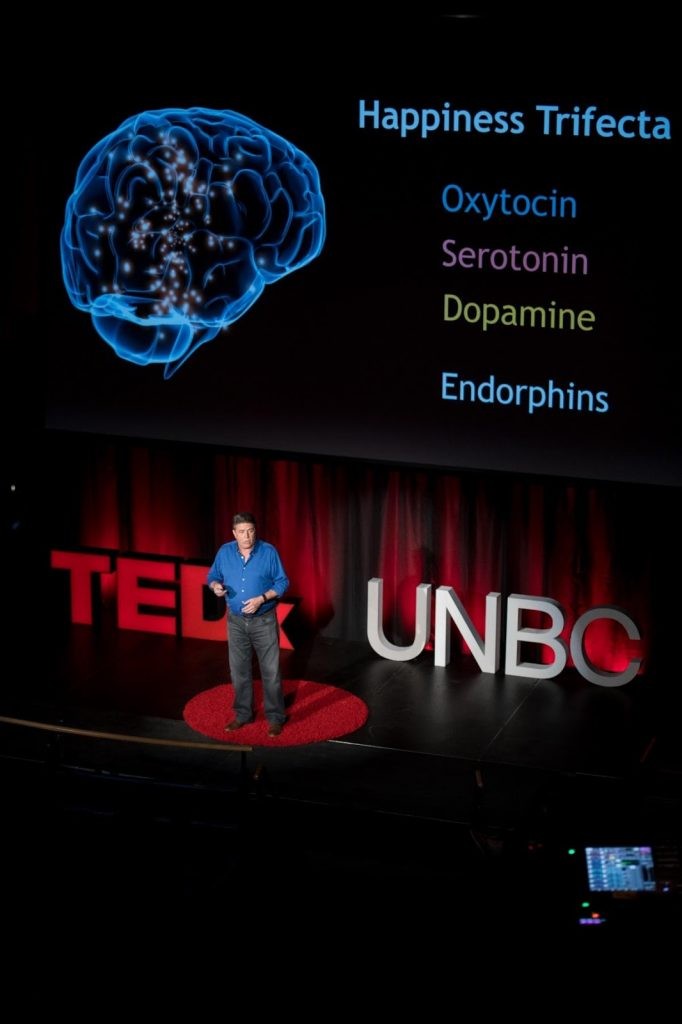
Feeling confused – can you tell? No? Really???
The slide may or may not have been working properly. I really don’t know. I’ll hopefully figure it out when I see the video. But, in the moment, it threw me. I was having eyes-wide-open nightmares of a repeat of the crickets moment from the dress rehearsal and it rocked me. I managed to get back into gear and continue the talk but was struggling with the adrenal fight or flight reaction that the stumble triggered.
IT WAS AWFUL. My breathing was shallow, my body and voice were shaking, and I DEFINITELY WAS NOT HAVING FUN.
It was made worse by the fact that I had NO feedback as to whether the audience was with me or not. The setup of the theatre and the in-your-face lighting combined to make the audience disappear into an inky blackness. I couldn’t even hear them. I didn’t have a clue as to whether anyone was even remotely interested in my topic let alone enjoying it.
This was NOT the Bloomberg stage. It was terrifying.
When I don’t know what to do, I believe that it is important to keep moving, even if you don’t know where to go. I (bravely?) soldiered on through the next sections, trying to get my breathing under control and minimize the shaking that was threatening to completely disrupt my plans.
Fortunately, one of my next slides was very “bright” and it momentarily illuminated the audience.
OMG – they were smiling! Now that I could (faintly) see them, I even heard them laugh at one of my jokes! It dawned on me: I was going to survive this adventure with at least a modicum of self-esteem. And I relaxed. The shaking slowed. My voice strengthened. And I got back into the groove of my talk, interacting with the audience and the content. It almost felt good.
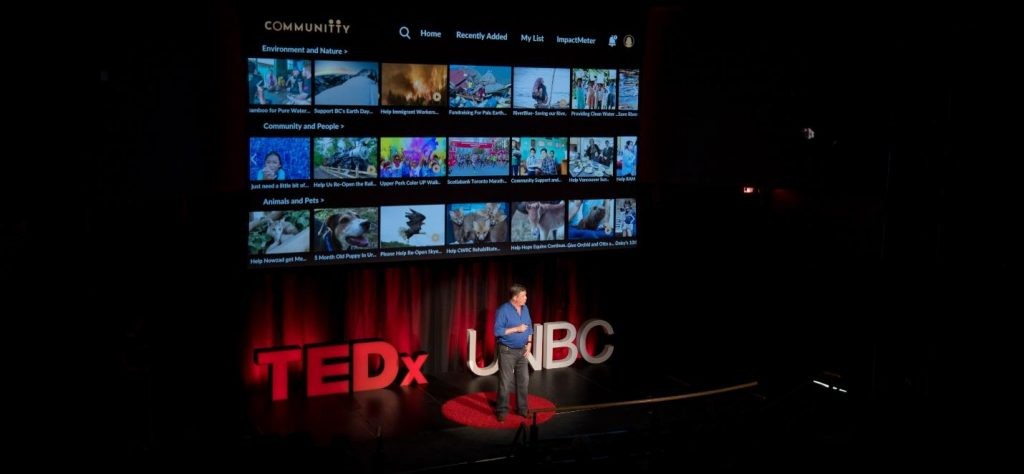
AND THEN IT WAS OVER.
Nature abhors a vacuum and will rush to fill it.
I was drained. And so were the rest of the speakers. We attended a wine and cheese party for the attendees and then went to dinner. It was interesting to see the emotional let-down as everyone processed what we’d been through. In some ways, it reminded me of the reactions after a group of my friends went skydiving. A common thread of our thoughts: I just jumped out of a perfectly good airplane! Am I crazy?
Over the next few weeks it was like experiencing the emotional hole that is created when a major life project or relationship is over. I felt empty. And a bit “at loose ends”.
I’ve been around the block long enough to know that when a hole like this exists in my life, it is MASSIVELY important to very consciously visualize what I want to fill that emotional space. There is a saying: Nature abhors a vacuum and will rush to fill it. Wise minds recommend being very clear and vocal about what you want to fill that hole because, without guidance, you can end up with a really negative “thing” in your life. As a result, I’ve been thinking very hard about the direction I want my business life to take. There are some big goals and aspirations in there. Funny enough, I’m already seeing progress…
Was the talk world-class? I doubt it. I felt like I had the opportunity to smash a soft pitch out of the park but had to settle for getting on base. Time will tell if the audience likes what I had to say. In my heart, I know that it is an important idea and I hope that it will resonate with audiences. More importantly, I hope it will help inspire a change in the attitudes and behaviors of charities and therefore help them continue their important missions.
Looking back, I have to say that this little TEDx adventure was MUCH more impactful on my business and personal life than I ever would have imagined. I’m hoping by sharing the story of my journey I can help you evaluate, eyes wide open, if an event like this will help you move forward.
For a future TED speaker
To try to summarize this journey, here are my key takeaways:
- Get clear on your agenda. What do you want to happen because of your talk?
- Figure out who you are and why is it OK to expect that result.
- Remember – this is a performance of concepts – not a written essay read aloud.
- Assemble a team of people who will tell you honestly what they see and hear. Great feedback at the beginning will save you tremendous effort and perhaps some embarrassment later.
- Decide who is your target audience and why will they want to listen. This may or may not be the group of people who pay to see you speak.
- 18 minutes is a very long time. Aim for 15 or less. The addition of appropriate pauses will stretch it out perfectly.
- Writing 18 minutes of precisely tuned content took me hundreds of hours. I thought I must be incompetent but many of speakers echoed the huge volume of work they had to do.
- Take a fresh look at how you want to appear on stage i.e. check out your style. Doing a TED talk is a great catalyst to update your look.
- You will share this experience with a handful of other people who are also giving their talks at the same event. They are a great group to leverage for the emotional support you’ll need to get this done well.
So… What’s your idea worth sharing? Add it to the comments below and see how people respond.
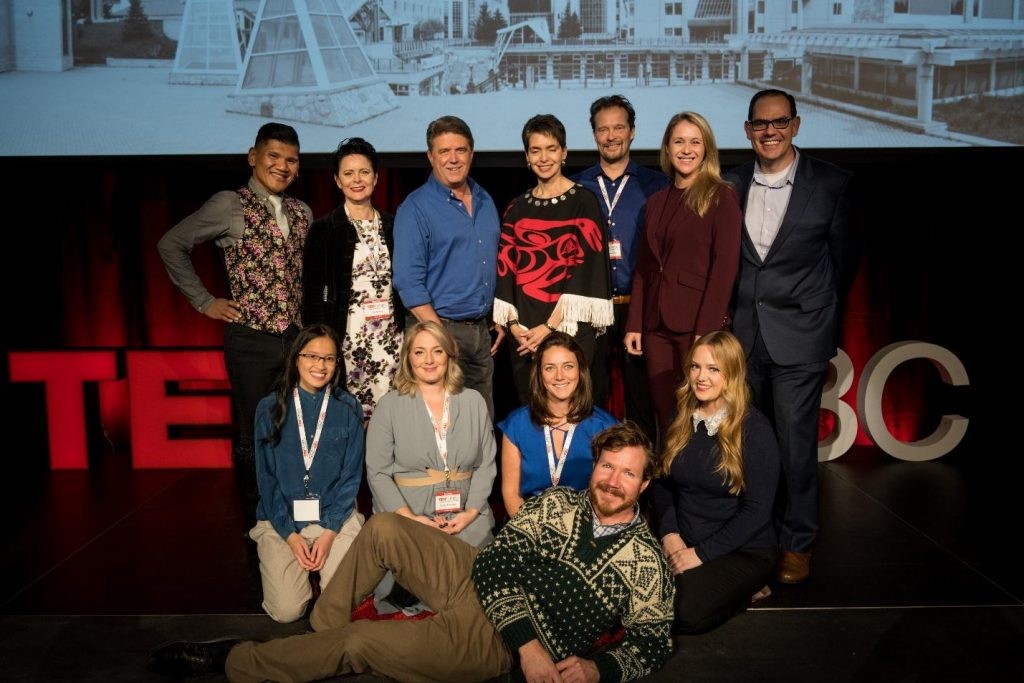
I’m grateful to the organizers of TEDx UNBC 2019 and the wonderful speakers for helping me have such a great experience!
